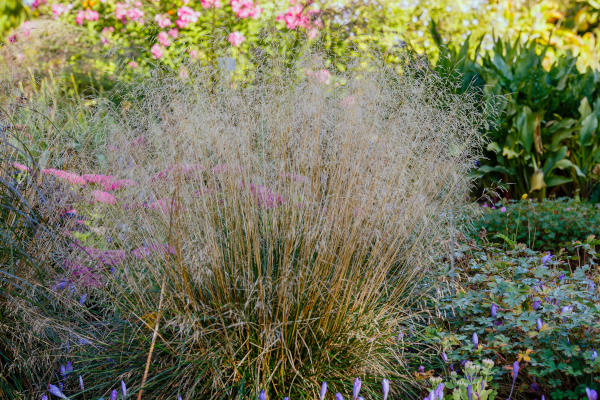How to grow Deschampsia
There are 40 species of deschampsia grass found growing across the world in both northern and southern hemispheres. Found growing in meadows and woodlands with moist free draining soil in sun or part shade. Commonly called tussock or hassock grasses the cultivated forms are all derived from our native hair -grasses Deschampsia cespitosa and Deschampsia flexuosa.
Deschampsia are grown for their attractive plumes of airy seed heads which dance in the softest breeze. Panicles are held high above dense narrow arching evergreen leaves. The upper surface of the leaf has tiny teeth which can cut into skin so wear gloves when handling.
The genus is named after French physician and naturalist Louis Auguste Deschamps, 1765-1842.
Fortunately nurserymen have cultivated many decorative varieties which do not seed everywhere which could be a problem in home gardens.
Individual species may have their own common name, as you’ll see from our table below.
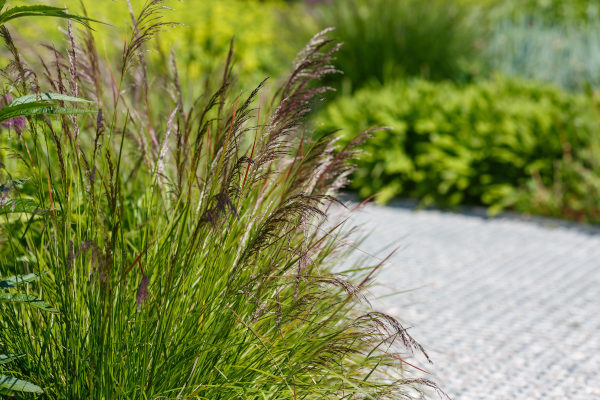
Zantedeschia is a genus of flowering plants from the family Araceae and is native to southern Africa. With a rich history dating back to the Ancient Romans, these deciduous or semi-evergreen perennials have been used as a symbol of celebration. Zantedeschia was Named after Professor Giovanni Zantedeschia, an Italian botanist.
There are two main forms of Zantedeschia: hardy and tender. Hardy forms of the plant can be grown outdoors, enjoy moist soil and full sun or partially shaded conditions - these are known as Arum lilies. Tender forms of Zantedeschia prefer being grown in containers or pots and should be brought inside over the winter - these are known as Calla lilies.
With tuberous flora in all colours from whites, yellows and oranges to deep reds and purples, Zantedeschias are not to be overlooked in any garden, as long as they have sufficient sunlight to grow in.
Ready to learn more about growing Zantedeschia? Read on for all there is to know...

Key Information
Soil pH
Position
Hardiness

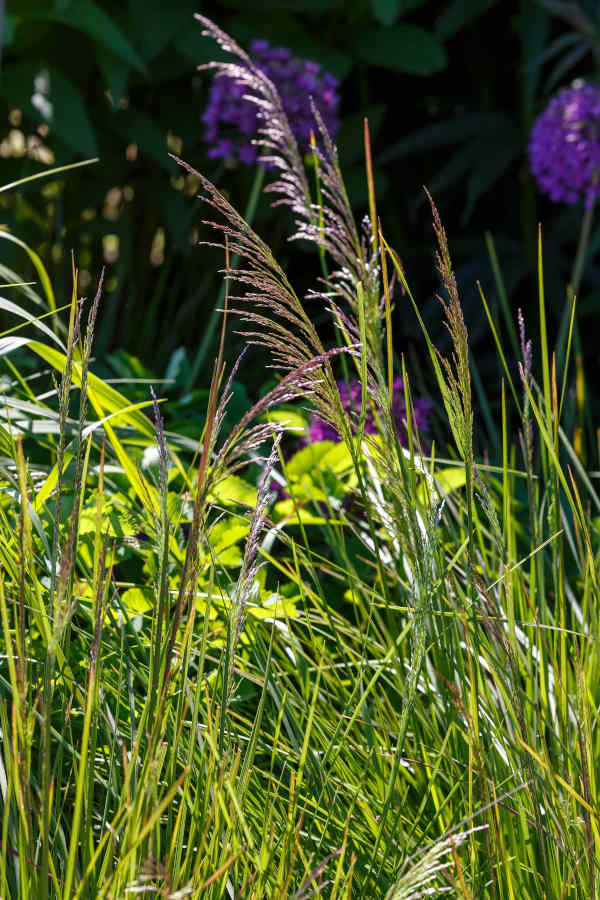
| Species | Common name |
HARDY – very cold winter (H6/ -15°C to -20°C) Grow anywhere in the UK | Deschampsia cespitosa |
Tufted Hair Grass |
Deschampsia flexuosa | Wavy Hair Grass Crinkled Hair grass |
Where & when to plant Deschampsia
Position - Sun or Part Shade
Soil - Moist free drained humus-rich soil, neutral to acid.
Deschampsia can be planted all year around when purchased grown in pots. Bare rooted plants are best planted in late winter or early spring when the ground is not frozen or waterlogged.
If container grown plants are planted out during the active summer growing season make sure that they are watered regularly until the plant has settled into its new location. Water at soil level rather than the foliage.
Fitting into cottage and prairie garden styles. They mix effortlessly into woodland planting schemes too.
Deschampsia are low maintenance plants ideal for mixing into a floral border, or patio container gardening as a solo plant or mixed with shrubs, perennials and bedding.
Known to grow almost anywhere including the Antartic, deschampsia do not like deep shade.
How to plant Deschampsia
- For planting in the garden, dig the soil area removing any large stones and weeds and breaking up any lumps. Mix in some organic matter, ideally leaf mould, though manure or garden compost are also fine. Rake level and firm with your heels. Rake level again.
- Water plants well and allow to drain before planting.
- A good tip is to dig a hole twice the size of the root-ball. Fill with water and allow to drain before placing in the plant.
- Place the plant in the hole, ensuring the top of the root ball sits level with the surface of the soil. Too low and the plant may rot, too high and the roots can dry out.
- Backfill with soil and firm in gently with your foot.
- Soak well with water.
- Mulch around the base with well-rotted organic matter.
- For planting in containers, first choose an appropriately sized pot around 5-7cm larger than the rootball of your plant (you’ll need to gradually increase the pot size every few years). Always ensure there are plenty of drainage holes in the bottom.
- Use a good quality potting compost if you have it and mix with garden soil. Mix in some horticultural grit and, if not already present (check the labelling on the bag) some slow-release fertiliser granules.
- Start by partially filling the pot with compost; enough so that when placed on it the upper surface of the root ball is about 3cm lower than the top of the pot.
- Fill around the plant with compost, firming down with your fingers then adding a little more so it is held tight.
- Pick up the container and lightly tap on the potting bench or ground a few times to help further settle the compost around the plant.
- Soak well with water.
- A mulch with horticultural grit will look attractive and help to prevent a ‘cap’ or crust forming on the top of the compost (something container plants can suffer due to the artificial nature of their watering).

What to plant with Deschampsia
Outdoors, plant alongside plants with different shaped or coloured foliage as a contrast. Try Ferns such as adiantum and dryopteris, along with hosta, rodgersia, or flowering Allium, Astrantia, Dahlia, Coreopsis, Echinacea, Eryngium Salvia.
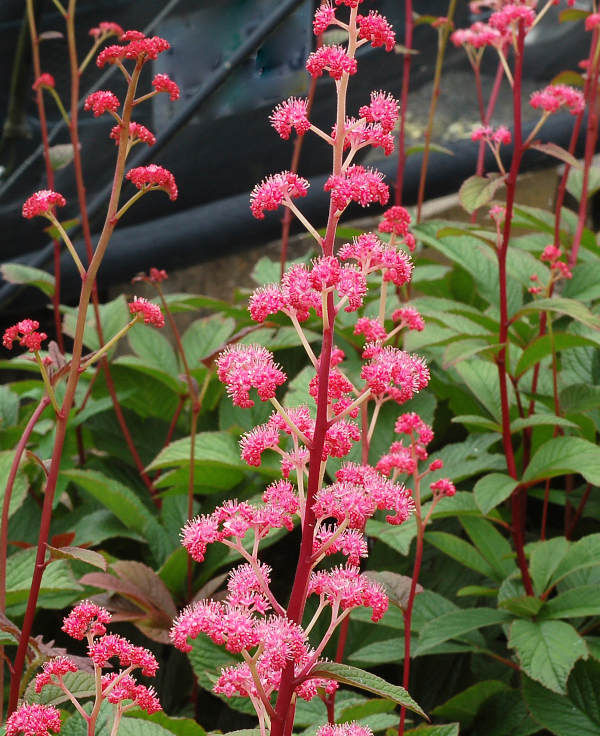
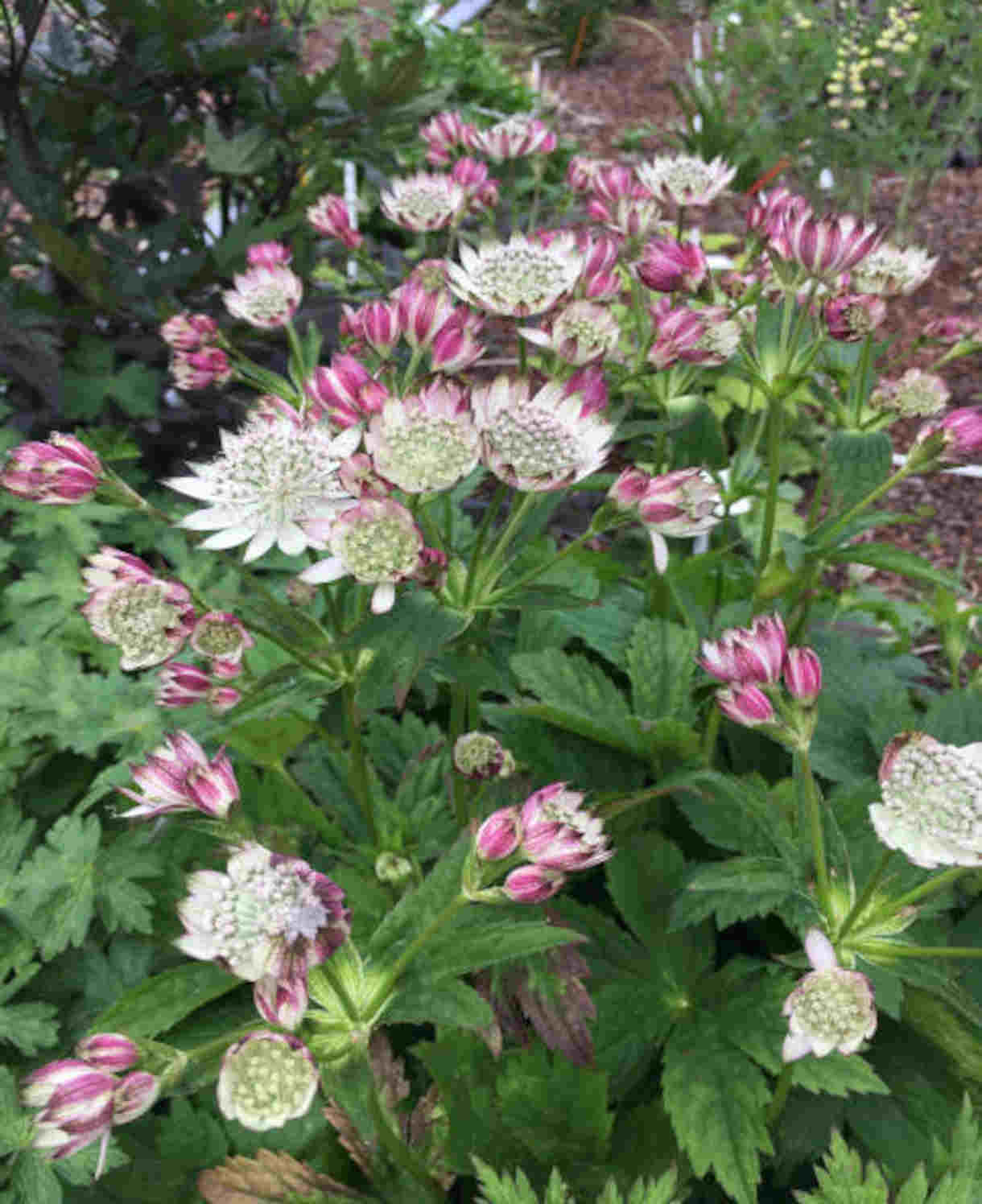
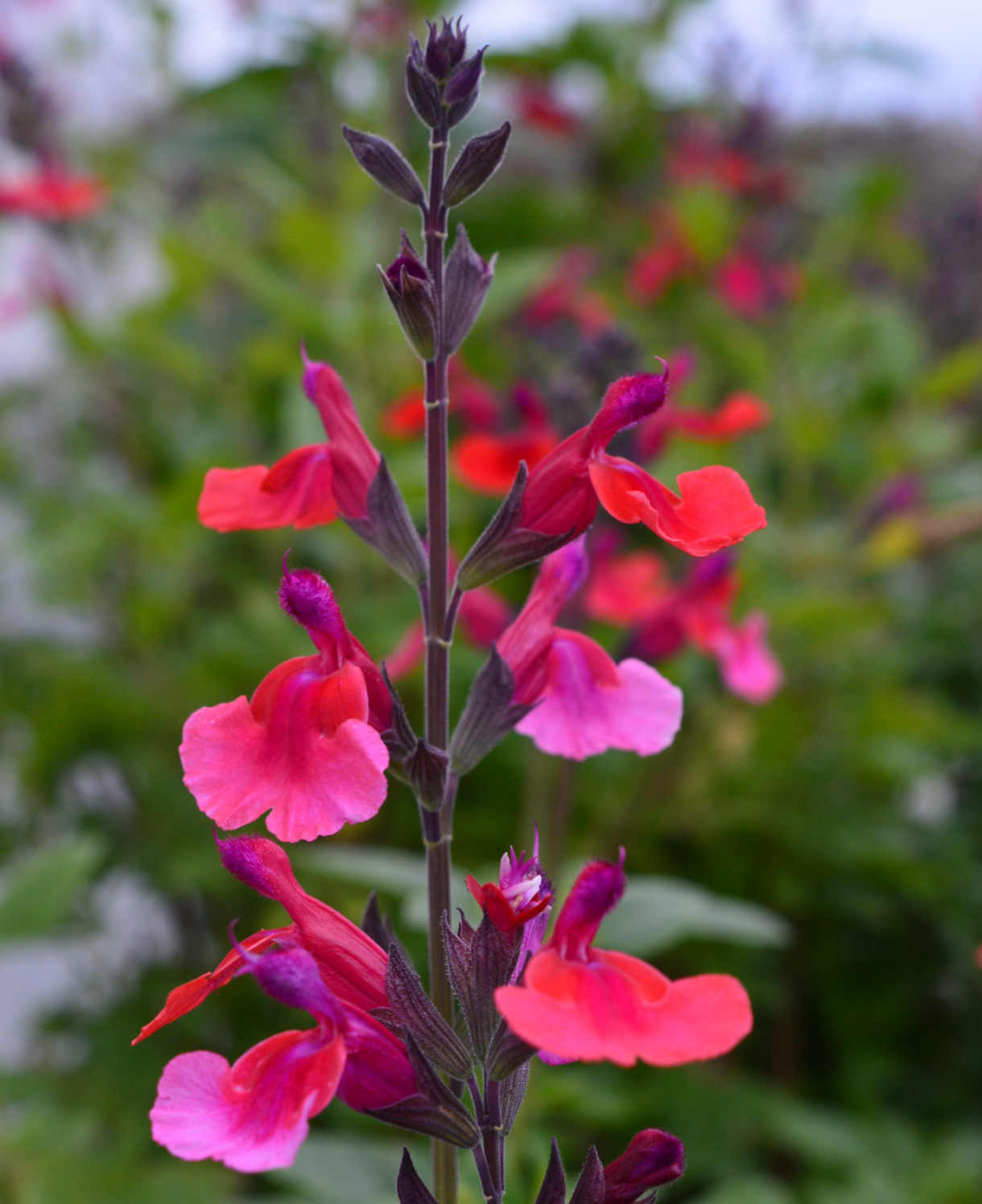
How to care for Deschampsia
Pruning and Deadheading
The majority of deschampsia species are evergreen, yet if given a good cut back to ground level in early spring before growth resumes, they will look far neater for the coming growing year.
Leaving spent seed heads on during winter provides shelter for hibernating insects and they also look fantastic on a frosty morning.
Watering
Deschampsia enjoy moist yet free rained soil. On planting outside, they benefit from a good watering in on planting and then regular soakings until established. After this they should need watering only in very hot, dry conditions. Allowing the top few centimetres to dry out between soakings is a good rule of thumb to avoid overwatering. To check this, wiggle your finger down into the soil until you hit a cool, damp bit.
Feeding
On healthy, fertile soil, a mulch of well-rotted organic matter (i.e., a layer of leaf mould, manure, or garden compost applied to the soil around the plant) should provide enough nutrients for your deschampsia. This has the added benefit of suppressing weeds and locking in moisture. Mulch when planting, and then again each spring.
If you garden on poor soil or your deschampsia looks in need of a boost, applying a granular general purpose feed to the surface of the soil and lightly working in can reap benefits. This is known as a top dress and should be done when you’re mulching in spring – first apply the feed, then cover with the mulch.
Container-grown plants are different as they rely solely on the gardener for nutrition. Get off to a flying start by making sure you use a good quality compost with slow-release granules mixed in. These generally provide nutrients for around 6 to 8 weeks, after which you’ll need to apply a liquid feed every 2-3 weeks until the end of the growing season (i.e., September-ish).
Remember to repot your deschampsia every few years into a slightly larger pot using fresh compost. In-between, it’s worth removing the top few centimetres of compost each spring and replacing with a fresh mix of compost and slow-release granules.
Cold Protection
Deschampsia are rated Hardy by the R.H.S - H6 can be relied upon to get through a UK winter without concern. Protect container-grown specimens in very cold, exposed areas. Bring under shelter of the overhang of a roof and make sure water can freely drain from the bottom of its container. Otherwise, leave them to it!
Pests and Diseases
Deschampsia is generally considered problem-free, yet on rare occasions can suffer from rust.
Treat by providing conditions that encourage strong growth. Avoid excessive nitrogen fertilisation which promotes lush growth easily colonised by rust. Give plenty of ventilation, reduce watering, give more sunlight. Pick off any badly affected leaves disposing suitably.
How to propagate Deschampsia
The recommended way to propagate deschampsia is to divide mature clumps in early spring. A mature clump would be described as around 3 years old.
- In early spring, cut foliage to ground level. Use a shovel to dig up the entire plant rootball.
- Gently pull apart into smaller divisions. Each division should have 3-5 healthy stems and intact roots.
- Plant each section individually into suitably sized pots using a good quality compost or back into spaces in the border. Make sure it is at roughly the same depth as it was previously – planting too deep can cause rotting.
- Water lightly and as required when the soil feels dry.
- Some cultivated varieties may sometimes self-seed.
* Many plants carry Plant Breeders Rights and cannot be propagated for commercial purposes.
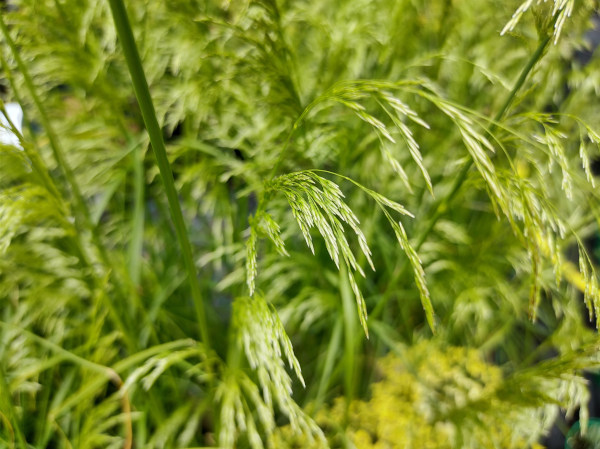
Common Deschampsia questions
How big does deschampsia grow?
This very much depends on the species. Perhaps the most commonly grown Deschampsia in the UK, D. cespitisa, tends to reach around 75cm height with a 75cm spread.
Check individual descriptions for more information.
Is Deschampsia toxic to dogs?
Deschampsia has no toxic effects reported.
